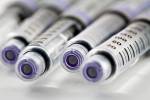Does your bladder control your life? What you should know about your options
(BPT) - Do you feel like you spend your life in the bathroom? Do your night-time potty runs keep you from getting a good night’s sleep? Nearly one in five adults struggles with an overactive bladder (OAB), according to the National Association for Continence (NAFC). The condition results in an overwhelming urge to urinate, frequent bathroom visits and accidents. OAB is linked to hypertension, obesity and arthritis in women, and an elevated risk of regular sleep disturbances, overeating and poor self-esteem in both sexes, the NAFC says. Many people suffer in silence, too embarrassed to talk to anyone, even their doctor.
There is help. The majority of people with OAB can find relief with treatment. The first step is talking to your doctor and letting him or her know if you are experiencing sudden urges to use the bathroom, how many times you go during the day and if you have accidents. Don’t worry; he or she has heard it before. From there, your doctor will work with you on a treatment plan, which may include:
1) Behavioral therapies – Adhering to a schedule of bathroom visits every two to four hours can help ensure your bladder remains empty. Another similar approach follows a schedule but gradually increases the length of time between bathroom trips in an effort to “retrain” the bladder. Kegel exercises that strengthen pelvic muscles may also help.
2) Medication – If behavioral therapies don’t work for you, the next step is usually medication. OAB drugs are designed to block the nerve signals that cause bladder over-activity. Typically, patients try a drug for four to eight weeks, but may switch if a specific medication causes side-effects.
3) Other therapies – If behavioral therapies and drugs don’t work, other options are still available. These therapies include non-surgical neuromodulation, sacral nerve stimulation and BOTOX(R) injections. If your doctor does not provide these therapies, ask for a referral to a urologist or other incontinence specialist.
With virtually no side-effects, the Urgent(R) PC Neuromodulation System by Uroplasty Inc. is a non-drug, non-surgical option for overactive bladder. The prescription-only treatment is delivered in a doctor’s office and is a low-risk alternative when behavioral therapies and drugs haven’t worked. A needle placed near a nerve in the ankle delivers a mild electric current to stimulate key pelvic nerves responsible for bladder control. Through a series of 30-minute, in-office treatments once a week for 12 weeks, up to 80 percent of patients will see an improvement in their symptoms, including substantial reductions in the frequency of bathroom visits and number of accidents. Most patients experience no side-effects, and any that do occur are typically temporary and mild – such as minor pain and skin inflammation near the stimulation site. To learn more, visit www.urgentpcinfo.com. You can also find a provider in your area through the Uroplasty website.
Sacral Nerve Stimulation (SNS) is a surgical alternative that treats OAB with an implanted device. BOTOX, long used in cosmetic surgeries, is also FDA-approved for OAB treatment in adults. BOTOX injections into the bladder muscle cause the organ to relax and retain larger volumes of urine. Like any other type of surgery, these options pose complication risks.
If you have been diagnosed with OAB, or experience a frequent, urgent need to urinate, treatment can help. It’s important to take charge of your condition, talk to your doctor, research your options and choose a treatment that’s right for you.



















